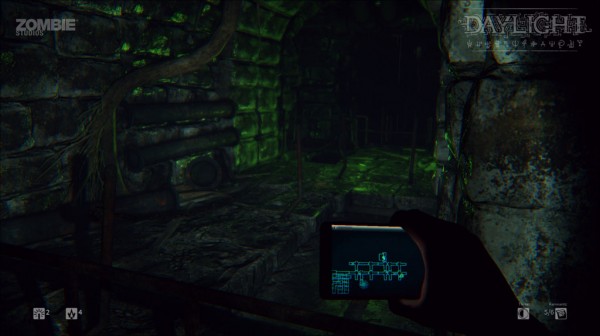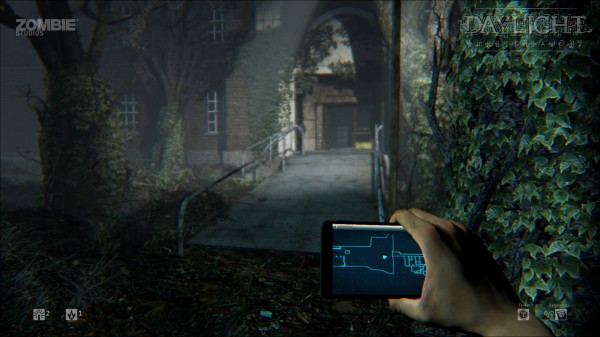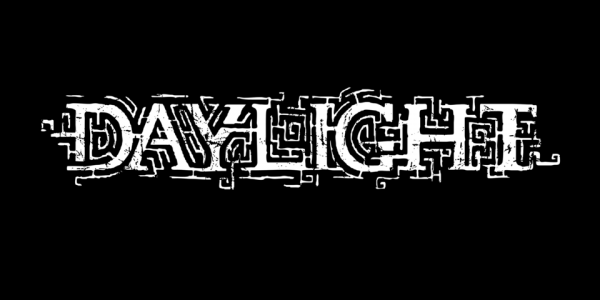I tend to avoid survival horror games. It’s not based on inherent design flaws or an overall lack of interest in the genre. Quite simply, I jump in my chair at anything remotely scary. Playing games like Amnesia: The Dark Descent or Silent Hill creates a nervous tension that preys on my fears and stresses me out. I understand why people seek such thrills, but my heart can only take so much! Fortunately for me, Daylight is not a game that instills those feelings. Unfortunately for everyone else, it makes for an unremarkable and mediocre survival horror game.
 Daylight presents a fragmented experience in both design and narrative. The fragmentation works in the story’s favor, as it helps establish an air of mystery and tension as players uncover the secrets of the first environment: a haunted hospital. Progress is achieved by discovering remnants, notes and logs of the hospital’s past that illuminate the macabre nature of the setting and the fate of the female protagonist. The way in which the story unravels through notes fits well within genre conventions and provides the game with strong atmosphere. Sadly, Daylight then squanders this foundation in its mechanics and design.
Daylight presents a fragmented experience in both design and narrative. The fragmentation works in the story’s favor, as it helps establish an air of mystery and tension as players uncover the secrets of the first environment: a haunted hospital. Progress is achieved by discovering remnants, notes and logs of the hospital’s past that illuminate the macabre nature of the setting and the fate of the female protagonist. The way in which the story unravels through notes fits well within genre conventions and provides the game with strong atmosphere. Sadly, Daylight then squanders this foundation in its mechanics and design.
As I said, much of the game revolves around the discovery of remnants. Essentially it’s another way to say the game mostly involves fetch quests. Only by discovering these remnants can the player progress, and I had plenty of moments in which I’d scour every square inch of an environment to find that last clue. The way in which the phone acts as a map and auto-fills is a nice touch, but it doesn’t prevent the frustration of getting lost. The game does eventually open up when it shifts to a forest setting, but at that point the story is just about over. Along the way the game offers meaningless crate puzzles, perhaps in an effort to add variety. Instead they act as barriers that hinder the experience even more.
Daylight does contain enemies – this is a survival horror game after all. Much of the genre’s success hinges on a subtle threat that weighs on the mind of the player. Daylight pushes subtlety too far and instead lacks any kind of threat at all. Enemies are entirely absent from the first portion of the game, which does build anticipation and fear. But when they do arrive, a simple flare scares them away. Glowsticks and flares are easily found in the environment, so at no point did I worry about seeing a game over screen. I would look at the enemy with a blank stare, use a flare, and go about my business.
 All of this coalesces into an experience devoid of scares. Again, let me remind readers that I’m the kind of guy who has nightmares about survival horror games. I jumped a few times in my chair, but nothing really got the heart pumping. Daylight does include a streaming option in which Twitch chat comes into the fold to help scare the player. Individuals in chat have a few different commands, such as the ability to introduce random screams and footsteps into the player’s game. There are only six main commands though, and I knew what to expect after a few minutes. I soon grew accustomed to the flickering lights and strange background noises. Again, I felt completely comfortable with a game in which discomfort would be a key strength.
All of this coalesces into an experience devoid of scares. Again, let me remind readers that I’m the kind of guy who has nightmares about survival horror games. I jumped a few times in my chair, but nothing really got the heart pumping. Daylight does include a streaming option in which Twitch chat comes into the fold to help scare the player. Individuals in chat have a few different commands, such as the ability to introduce random screams and footsteps into the player’s game. There are only six main commands though, and I knew what to expect after a few minutes. I soon grew accustomed to the flickering lights and strange background noises. Again, I felt completely comfortable with a game in which discomfort would be a key strength.
One of Daylight‘s big selling points is its procedurally generated design, in which environments change on repeated playthroughs. Well, I imagine getting lost in slightly different hallways while searching for remnants won’t generate much interest. It does change the layout, but I found myself even less engaged on a second playthrough.
Not much can make up for the hollow experience at Daylight‘s core. It’s a survival horror game with a decent narrative and no real scares. I came in expecting tension and fear. Instead I was left with sadness and disappointment. Boredom is a word I don’t often equate with the genre, but it’s exactly what I felt while playing Daylight.


















